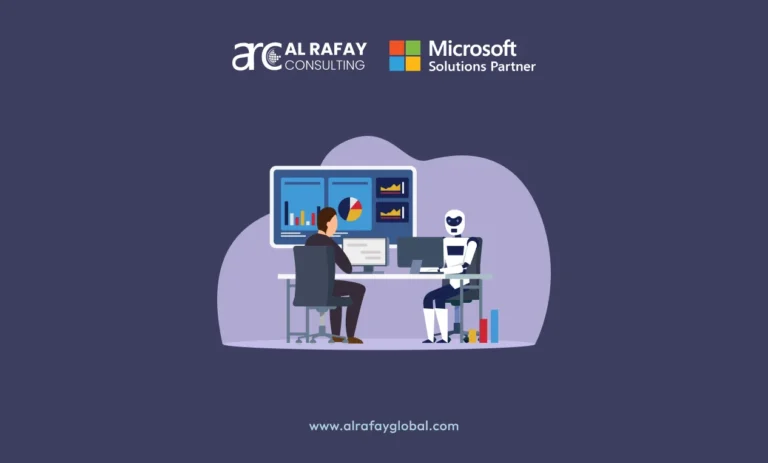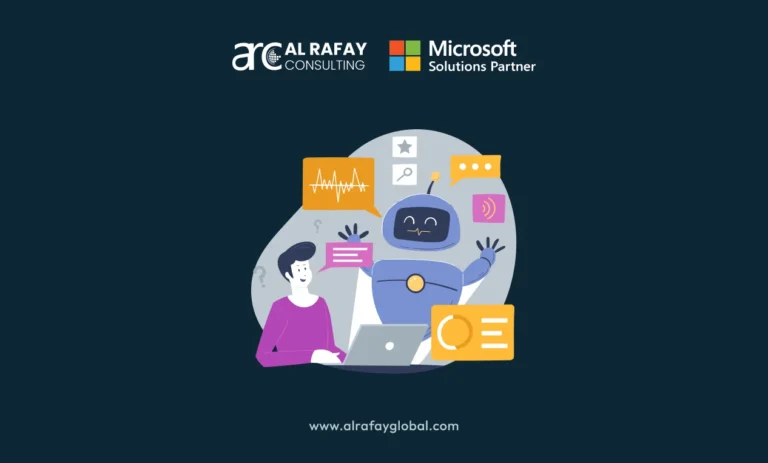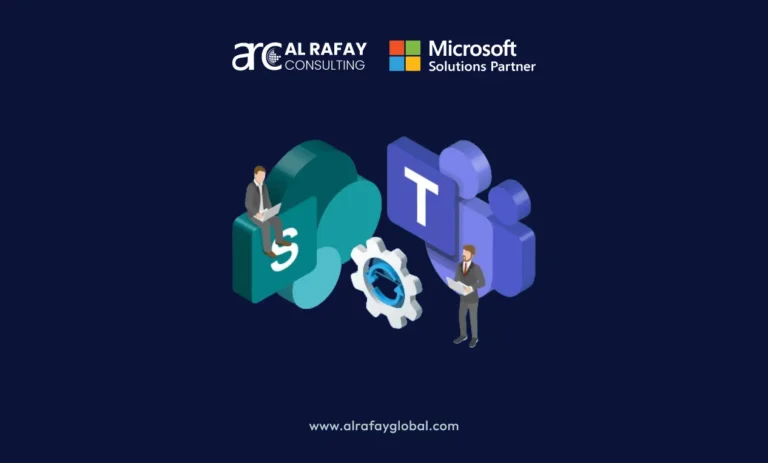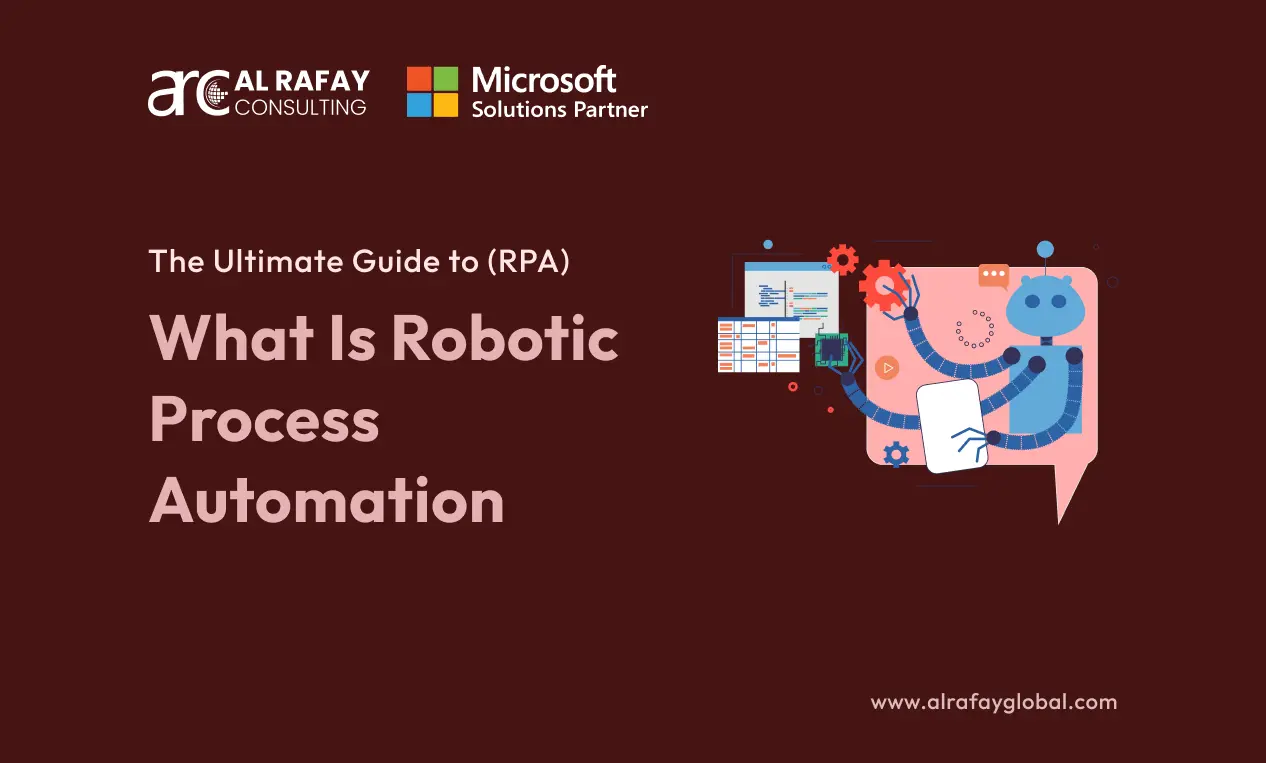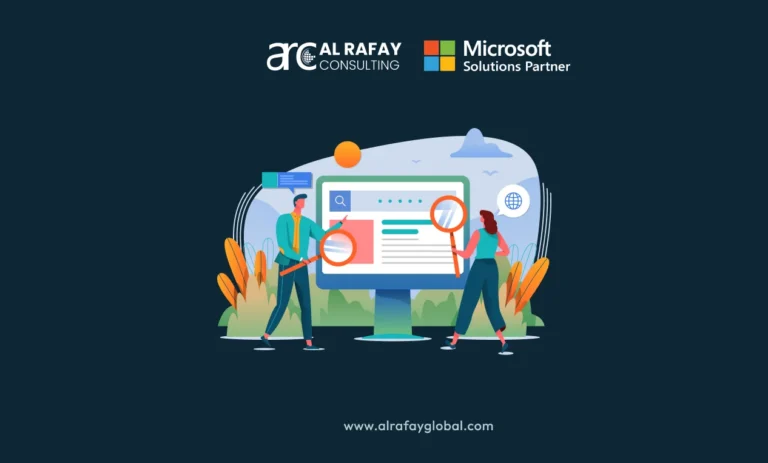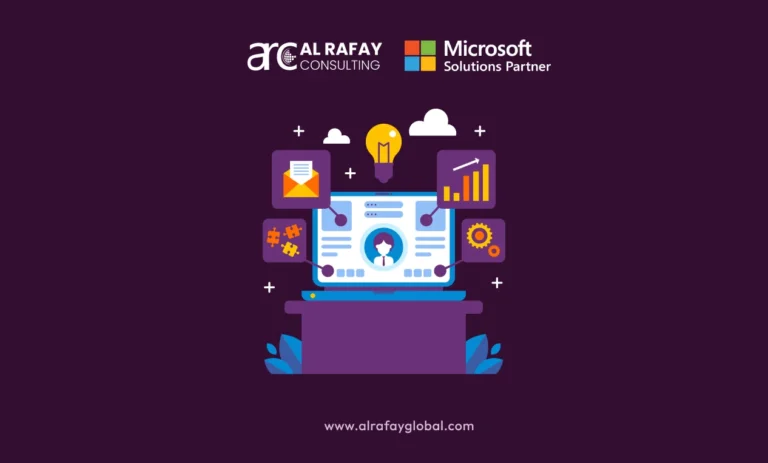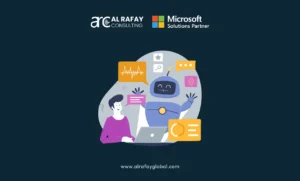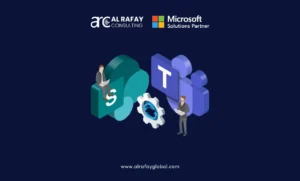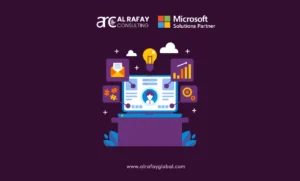Businesses are continuously seeking ways to improve efficiency, reduce costs, and stay competitive with the help of enterprise AI platforms. Automation has emerged as a crucial tool for achieving these goals, with Robotic Process Automation (RPA) at the forefront. RPA is transforming how organizations handle repetitive tasks by automating manual processes with software bots. This technology is increasingly becoming a key enabler of digital transformation across industries. According to a report by Statista, as of 2024, the global RPA market cap is around $5.4 billion and it is expected to rise to $81.8 billion by 2032.
This clearly shows the immense demand for tech in the market. But what is robot process automation? How it works and what benefits can your organization get by implementing it? Well, that’s what we are going to find out in this guide.
In this comprehensive guide, we will explore the technical aspects of RPA, including how it works, its benefits, the various types of RPA, comparisons with other automation technologies, and much more. So, whether you’re a technical professional seeking to implement RPA in your organization or simply looking to deepen your understanding of automation you will find all the information you need here.
Key Takeaways
Robotic Process Automation (RPA) automates repetitive, rule-based tasks, enhancing productivity, reducing errors, and cutting costs across industries like healthcare, finance, and manufacturing.
RPA can be categorized into attended, unattended, and hybrid types, each suitable for different process automation scenarios.
AI integration is transforming RPA into Intelligent Process Automation (IPA), enabling bots to handle more complex, decision-driven tasks.
RPA tools vary in ease of use, scalability, and customization, with platforms like UiPath and Automation Anywhere leading the market.
Common RPA challenges include organizational resistance, scalability issues, and technical limitations, which can be mitigated through change management, AI integration, and strong governance.
Future RPA trends like hyper-automation, low-code platforms, and RPA-as-a-Service (RPAaaS) will further drive digital transformation and streamline business operations.
What is Robotic Process Automation?
The first we need to do in this blog is define what is robotic process automation.
Robotic Process Automation (RPA) refers to the use of software bots to automate rule-based, repetitive tasks typically performed by humans. These bots interact with digital systems in much the same way a human would—by manipulating data, triggering responses, and communicating with other systems to execute business processes. RPA bots can be thought of as digital workers, designed to handle mundane tasks with a high level of accuracy and consistency, thereby freeing up human workers to focus on more strategic and value-added activities.
Key concepts in RPA include:
Bots: Software agents that perform automated tasks.
Automation Scripts: Predefined rules and actions that dictate bot behavior.
Triggers: Events that start a bot’s execution, such as the arrival of a new email or file.
Integration with Existing Systems: RPA bots work across different applications, databases, and platforms.
Unlike traditional automation, which may require deep integration with an organization’s backend systems, RPA interacts directly with the graphical user interface (GUI) of applications, making it more accessible for automating processes without complex system modifications.
How Does Robotic Process Automation Work?
RPA operates by replicating human interactions with software systems through a combination of screen scraping, API integrations, and task automation scripts. Here’s how RPA works on a technical level:
Process Mapping: The first step involves analyzing the task to be automated, breaking it down into distinct steps, and identifying the rules governing the task.
Bot Development: Using RPA tools (such as UiPath or Blue Prism), bots are developed to execute the task. This can involve low-code or no-code environments where prebuilt components are configured rather than traditional programming.
Interaction with Applications: Bots can interface with multiple systems simultaneously, performing tasks like copying and pasting data between applications, sending emails, or triggering workflows.
Execution: Once programmed, bots work continuously without fatigue, handling tasks like data extraction, invoice processing, or account reconciliation with precision.
Monitoring and Optimization: The performance of bots is monitored, and adjustments are made to optimize efficiency and resolve errors.
Benefits of Robotic Process Automation
RPA offers a broad spectrum of benefits across industries by enabling businesses to streamline processes and optimize their operations. Some of the key advantages include:
Increased Productivity: RPA bots can work around the clock, handling tasks faster than human workers. According to a study by Deloitte, RPA can reduce process completion times by up to 80%.
Cost Savings: By automating labor-intensive tasks, businesses can significantly reduce operational costs. SDLCorp estimates that RPA can deliver savings of 20-30% across various sectors.
Error Reduction: Human error is a common issue in repetitive tasks like data entry. RPA bots follow predefined rules, ensuring consistent and accurate execution.
Scalability: RPA solutions are highly scalable. Once a bot is configured, it can be easily duplicated to handle additional workloads, especially during peak demand.
Improved Compliance: RPA ensures that business processes are executed according to rules and regulations, providing full audit trails that help maintain compliance.
Time and Cost Savings, Error Reduction, and Scalability
RPA bots work faster than humans, processing vast volumes of transactions or data points in a fraction of the time. This time-saving translates directly into significant cost reductions. For example, an RPA bot can process invoices or manage data integration tasks faster than a human, at an estimated cost of $3,500 annually compared to a full-time employee’s $40,000 salary. Additionally, since bots perform tasks with higher accuracy, organizations benefit from fewer costly mistakes and improved service quality.
What Are The Basic Components of A Robotic Process Automation (RPA) Implementation?
A natural question that comes to mind now is what are the basic components of a Robotic Process Automation implementation? Well, here’s a simple answer:
Design Tool In An RPA Solution
When integrating Robotic Process Automation into your business processes, a design tool plays a crucial role in orchestrating the automation flow. It allows you to visually map out the sequence of tasks that the software robots will perform, ensuring a structured and efficient automation process. The design tool aids in creating automation scripts, managing exceptions, and monitoring the overall performance of the automated tasks.
Central Control Dashboard for Monitoring and Management
A central control dashboard serves as the command center for overseeing and managing the deployed software robots. It provides real-time insights into the status of various automation processes, allowing you to track the execution of tasks, identify bottlenecks, and optimize workflows. The dashboard enables you to monitor key performance indicators, manage resources effectively, and ensure the seamless operation of the RPA implementation.
Software Robots for Task Execution
Software robots, often referred to as bots, are virtual workers that execute automated tasks as defined in the RPA solution. These bots are programmed to interact with different applications, systems, and data sources to perform a wide range of functions, from data entry and validation to report generation and decision-making. By mimicking human actions within digital systems, software robots enhance accuracy, speed, and consistency in task execution.
Integration with Existing Systems and Applications
Smooth integration with existing systems and applications is essential for a successful RPA implementation. By connecting the RPA solution with various software platforms, databases, and legacy systems, organizations can automate cross-functional processes and achieve a high level of interoperability. Seamless integration enables data exchange, task coordination, and end-to-end automation across multiple departments, enhancing operational efficiency and agility.
Exception Handling Mechanism for Error Resolution
An effective RPA implementation includes an exception handling mechanism to address unexpected scenarios and errors during task execution. By defining rules and workflows for handling exceptions, organizations can ensure that the automation process continues uninterrupted, even in the presence of anomalies. The mechanism allows for error identification, logging, and resolution, minimizing disruptions and maintaining the reliability of automated processes.
Embracing these fundamental components in a Robotic Process Automation implementation empowers organizations to streamline operations, boost productivity, and drive innovation across various industries.
Component | Role |
Design Tool | Orchestrates automation flow, maps task sequences, creates automation scripts |
Central Control Dashboard | Monitors and manages software robots, provides real-time insights into automation processes |
Software Robots | Execute automated tasks, interact with applications and data sources for enhanced task performance |
System Integration | Integrates RPA solution with existing systems, applications, and databases for seamless automation |
Exception Handling Mechanism | Manages errors and exceptions during task execution, ensures continuity of automation processes |
What Are The Three Types of RPA?
RPA solutions come in three primary types, each suited to different types of tasks:
1. Attended RPA
Attended RPA operates alongside human workers, assisting them with tasks that require some degree of human intervention. For example, in a call center, an attended bot might help an agent retrieve customer data while the agent is on the call.
2. Unattended RPA
Unattended RPA bots work autonomously in the background without any human input. These bots are ideal for processes that are fully automated and can be scheduled or triggered by events, such as batch processing of invoices.
3. Hybrid RPA
Hybrid RPA combines both attended and unattended automation. This is useful for end-to-end automation, where some parts of the process can be fully automated while others require human interaction.
When and How to Use Each Type for Different Processes
Attended RPA: Best for processes that require human decision-making or input at certain stages, such as customer service or technical support.
Unattended RPA: Ideal for back-office processes, such as data migration, batch processing, or regulatory compliance checks, where no human intervention is needed.
Hybrid RPA: Suited for complex processes that combine both human interaction and automated workflows, such as order fulfillment or loan approval processes.
Robotic Process Automation vs Other Automation Technologies
Robotic Process Automation vs Intelligent Automation
While RPA is primarily focused on automating rule-based, repetitive tasks, Intelligent Automation (IA) incorporates advanced technologies such as artificial intelligence (AI) and machine learning (ML) to handle more complex, decision-driven processes. The key difference lies in the following:
RPA: Automates repetitive, manual tasks with no decision-making capabilities. It relies on structured data and predefined rules.
IA: Uses AI and ML to understand and interpret unstructured data, allowing it to automate tasks that require decision-making, reasoning, or natural language understanding.
The Role of Artificial Intelligence (AI) in Enhancing RPA
AI plays a crucial role in enhancing RPA’s capabilities by enabling it to handle tasks that require cognitive skills. For example, AI-powered RPA bots can:
Extract information from unstructured data sources (like scanned documents) using Natural Language Processing (NLP).
Make predictions and decisions based on historical data using Machine Learning (ML) models.
Handle more sophisticated interactions, such as customer service chatbots powered by AI.
The integration of AI with RPA leads to Intelligent Process Automation (IPA), a more advanced form of automation that can handle end-to-end business processes involving both structured and unstructured data.
Business Process Automation vs. Robotic Process Automation
Business Process Automation (BPA) and RPA share the common goal of automating processes but differ in scope and complexity. BPA involves automating end-to-end processes, usually requiring significant changes to the underlying systems and deep integrations with IT infrastructure.
On the other hand, RPA operates at the UI level, making it faster to implement and more adaptable to existing systems. While BPA is suited for transforming entire business workflows, RPA excels in automating specific tasks within a workflow without the need for major IT overhauls.
For example, BPA would be ideal for automating an entire procurement process, while RPA might be used to automate invoice approvals within that process.
RPA Tools and Technologies
Which RPA Tool is Easy?
When it comes to simplicity and user-friendliness in RPA tools, UiPath stands out as a popular choice. With its intuitive interface and drag-and-drop functionality, UiPath allows for easy workflow automation without the need for extensive programming knowledge. Automation Anywhere is another user-friendly RPA tool known for its low-code approach, making it accessible to a wide range of users, including those with limited technical expertise.
Which Software is Best for RPA?
In the realm of RPA software, Blue Prism is recognized for its robust capabilities and scalability, making it ideal for enterprises with complex automation needs. Blue Prism offers a comprehensive platform for end-to-end automation and integrates seamlessly with existing systems, providing a secure and reliable solution for process automation. Microsoft Power Automate is another top contender, offering a range of pre-built automation templates and integrations with Microsoft products for efficient task automation and workflow management.
Do RPA Tools Require Coding?
One of the advantages of RPA tools is their ability to automate tasks without the need for extensive coding. While some advanced functionalities may require scripting or coding knowledge, modern RPA tools like UiPath, Automation Anywhere, and Blue Prism offer intuitive interfaces and visual workflows that allow users to create automation processes without writing code. This user-friendly approach enables organizations to quickly deploy RPA solutions and streamline operations without relying heavily on programming expertise.
By selecting the right RPA tool based on ease of use, software capabilities, and coding requirements, you can effectively leverage automation technologies to enhance operational efficiency, drive innovation, and achieve significant productivity gains in your business processes.
Robotic Process Automation Use Cases
Robotic Process Automation (RPA) has found widespread adoption across various industries due to its versatility in automating routine, high-volume tasks. Below are some detailed RPA use cases across different sectors, highlighting how this technology is being applied to solve business challenges, improve efficiency, and reduce costs.
Robotic Process Automation in Healthcare
Healthcare is one of the most complex and data-intensive industries, where RPA plays a critical role in reducing administrative overhead, enhancing patient care, and maintaining compliance with regulatory requirements. Here are some key applications of Robotic Process Automation in Healthcare:
Patient Records Management: Managing patient data and ensuring accurate updates across electronic health records (EHR) systems is a time-consuming process. RPA bots can automate the transfer of patient data from various sources into a centralized system, ensuring consistency and reducing administrative burdens.
Claims Processing: Insurance claims processing in healthcare is riddled with inefficiencies due to the manual nature of the task. RPA streamlines this process by validating claims data, ensuring it meets the required format and accuracy before submission. This automation reduces delays, improves claim approval rates, and ensures compliance with insurance standards.
Appointment Scheduling: Managing patient appointments can be complex, especially in large healthcare facilities. RPA bots can access multiple scheduling systems, book appointments, send reminders, and automatically reschedule in case of cancellations, enhancing patient experience and operational efficiency.
Compliance and Reporting: The healthcare industry is subject to stringent regulations like HIPAA (Health Insurance Portability and Accountability Act). RPA helps ensure compliance by automating tasks such as audit logs, reporting, and data access monitoring.
Robotic Process Automation in Finance
Finance departments deal with high volumes of data and repetitive, time-sensitive tasks such as account reconciliation, regulatory reporting, and invoice processing. RPA’s ability to handle these tasks quickly and accurately makes it an invaluable tool for financial institutions.
Financial Reporting: Financial reporting is often complex and error-prone when done manually, particularly in large organizations with multiple systems. RPA automates the extraction, compilation, and formatting of data from various sources to generate accurate and timely financial reports.
Audit and Compliance: Regulatory compliance is a significant challenge in finance. RPA helps automate compliance tasks by ensuring that transactions and reports meet regulatory standards. For internal audits, RPA bots can automatically gather data, analyze it against set criteria, and generate audit trails.
Accounts Payable/Receivable: RPA bots can automate invoice processing, match purchase orders with invoices, and update financial records without human intervention. This reduces errors, speeds up the payment process, and ensures timely financial reporting.
Robotic Process Automation in Banking
The banking industry handles large-scale transactions and has to meet strict regulatory requirements. RPA has become an essential tool for automating customer service, loan processing, and fraud detection.
Loan Processing: Processing loan applications involves several manual steps, such as verifying documents, performing credit checks, and entering data into systems. RPA bots can automate the entire process, from document verification to updating the loan management system, reducing processing time from days to hours.
KYC and AML Compliance: RPA helps banks comply with Know Your Customer (KYC) and Anti-Money Laundering (AML) regulations by automating customer data verification and monitoring transactions for suspicious activities. Bots can cross-reference data with government databases to verify identities and flag suspicious patterns in real-time.
Customer Service: Chatbots powered by RPA assist in customer service by automating routine queries like account balance inquiries, transaction histories, or password resets. This enables banks to provide faster, 24/7 customer service, reducing call center workloads.
RPA in the Revenue Cycle
In industries like healthcare and finance, managing the revenue cycle involves multiple steps, including billing, coding, collections, and denials management. RPA is particularly effective in optimizing these processes:
Billing Automation: RPA can extract billing data from different systems, generate invoices, and send them to clients or patients, ensuring timely and accurate billing.
Denial Management: Automating the review of denied claims helps organizations quickly identify the reasons for denial and resubmit claims with minimal human intervention.
Collections: Bots can be used to automate collections processes by sending out reminders for payments, updating financial systems with payment status, and following up on overdue accounts.
Robotic Process Automation Challenges
While RPA offers significant advantages, its implementation is not without challenges. From organizational resistance to technical limitations, the road to successful automation can be fraught with obstacles. Understanding these challenges is key to mitigating risks and achieving a smooth deployment.
Common Barriers to RPA Implementation
Organizational Resistance: One of the biggest hurdles in RPA adoption is resistance from employees, particularly due to concerns about job security. Employees may fear that automation will replace their roles, leading to hesitation or lack of cooperation during the implementation process.
Solution: Effective change management and employee engagement strategies are critical. It’s important to communicate how RPA can free up employees from mundane tasks, allowing them to focus on higher-value activities like strategic decision-making, creativity, or customer relationship management.
Technical Limitations: Although RPA excels at handling structured, rule-based processes, it struggles with tasks involving unstructured data or complex decision-making. For example, extracting data from handwritten documents or processing natural language inputs remains challenging for standard RPA tools.
Solution: The integration of Intelligent Automation (IA) technologies, such as optical character recognition (OCR) and natural language processing (NLP), can help overcome some of these limitations. By enhancing RPA with AI, organizations can automate more complex processes involving semi-structured or unstructured data.
Scalability: While many organizations successfully deploy RPA in individual departments or for specific processes, scaling RPA across an enterprise can be difficult. Challenges include managing a large number of bots, integrating automation across multiple systems, and maintaining consistent performance as the scope of automation increases.
Solution: To scale RPA effectively, organizations need to adopt strong governance frameworks, including centralized bot management, monitoring, and standardization of automation processes. Additionally, choosing an RPA platform with robust orchestration and scalability features is crucial.
Maintenance and Bot Downtime: RPA bots can break if there are changes to the underlying applications they interact with, such as a system update that alters the layout of a webpage or a software upgrade that modifies API functionality. This requires continuous bot maintenance and monitoring to ensure smooth operation.
Solution: Regular bot audits, a collaboration between IT and RPA teams, and investing in monitoring tools that can alert teams when bots encounter errors or break can help minimize downtime. Using more flexible and resilient automation techniques, such as API-based interactions, can also reduce the dependency on UI changes.
RPA Future Trends and Predictions
The future of RPA is closely tied to the broader trends of digital transformation and the increasing use of AI and machine learning. As the technology matures, new trends and advancements are shaping the landscape of automation. Let’s explore some key trends that are likely to define the future of RPA.
RPA and Intelligent Automation Evolution
The convergence of RPA with AI and machine learning is leading to the rise of Intelligent Process Automation (IPA). While RPA handles rule-based, repetitive tasks, AI introduces cognitive capabilities that enable automation to extend into areas that require decision-making, learning, and adaptation.
AI-Powered RPA Bots: By leveraging AI, future RPA systems will be able to handle unstructured data, perform predictive analysis, and autonomously improve their performance through machine learning. This means RPA will no longer be limited to structured processes but can handle more complex business functions such as fraud detection, customer sentiment analysis, and dynamic pricing.
For example, AI-powered RPA bots in customer service can not only automate responses to common queries but also understand customer sentiment from voice or text, allowing bots to provide empathetic responses or escalate complex issues to human agents.
Hyperautomation
Hyperautomation is one of the most significant trends in RPA and automation. Hyperautomation refers to the combination of multiple automation technologies—including RPA, AI, machine learning, and process mining—to automate as many processes as possible within an organization. It’s a more comprehensive approach to automation, where digital workers are not just automating individual tasks but entire business processes end-to-end.
Gartner predicts that by the end of 2024, organizations will lower operational costs by 30% by combining hyper-automation technologies with redesigned operational processes.
Low-Code/No-Code Platforms
As RPA tools continue to evolve, low-code and no-code platforms are gaining popularity. These platforms allow business users with little to no technical background to design and deploy automation solutions using visual development environments. This democratization of automation is allowing companies to deploy bots faster and more cost-effectively without needing to rely solely on IT departments.
The rise of citizen developers—non-technical employees who can build automation workflows—will accelerate the adoption of RPA across different business units, reducing the dependency on centralized IT teams for bot development.
Process Discovery and Process Mining
Process discovery and process mining tools are increasingly being integrated with RPA to identify and prioritize the most suitable processes for automation. These tools use data from business operations to create process maps, identify inefficiencies, and recommend automation opportunities.
Emerging Trend: The combination of process mining with RPA enables organizations to ensure they are automating the right processes. This leads to higher returns on investment by focusing automation efforts on high-impact areas.
RPA-as-a-Service (RPAaaS)
As more businesses adopt cloud-first strategies, RPA-as-a-Service is becoming a prominent trend. RPAaaS allows organizations to deploy bots via cloud platforms, reducing infrastructure costs and increasing scalability. This model enables businesses to access RPA tools on a subscription basis without the need for on-premise hardware or complex installations.
Companies using RPAaaS can quickly deploy bots in a cloud environment, ensuring they have the flexibility to scale up or down based on business needs without worrying about infrastructure management.
Year | Estimated Global RPA Market Size |
2022 | $3.7 billion |
2023 | $4.3 billion |
2025 | $6.9 billion |
2027 | $11.3 billion |
2032 | $81.8 billion |
Robotic Process Automation Services and Consulting
As RPA adoption continues to grow, businesses often require external expertise to ensure successful implementation, optimization, and scaling. RPA service providers and consultants play a critical role in helping organizations navigate the complexities of automation. Below is a breakdown of the services and consulting available for RPA.
Robotic Process Automation Services
Process Assessment and Consulting:
Before embarking on RPA implementation, it is crucial to evaluate which processes are most suitable for automation. RPA service providers conduct detailed assessments of business processes to identify automation opportunities and recommend the most efficient automation strategies. For example, a consulting firm might assess workflows within a finance department and identify accounts payable, expense management, and payroll as the best candidates for automation.
Bot Development and Implementation:
Many RPA service providers offer development services to build and deploy RPA bots tailored to the specific needs of a business. This includes bot design, programming, testing, and deployment. Often, businesses require custom bots that seamlessly integrate with their existing IT infrastructure. Service providers develop these bots to automate processes such as invoice processing, customer onboarding, or data migration.
Maintenance and Support:
After deploying RPA bots, ongoing maintenance is necessary to ensure they function as expected. RPA service providers offer support services to monitor bots, troubleshoot issues, and update bots as needed. Providers often offer proactive 24/7 monitoring services to ensure bots operate efficiently and are updated in response to changes in underlying systems.
Automation-as-a-Service (RPAaaS):
Some RPA service providers offer RPA-as-a-Service (RPAaaS), where companies can access RPA tools and bots in a cloud environment. This model is particularly attractive to small and medium-sized enterprises (SMEs) that may not have the resources to build an in-house RPA infrastructure. The key advantage of RPAaaS is scalability—businesses can deploy bots without worrying about infrastructure costs, as the service provider manages the back-end infrastructure.
Robotic Process Automation Consultants
RPA consultants bring specialized expertise in planning, implementing, and optimizing RPA deployments. They work closely with businesses to tailor automation strategies that meet specific needs and ensure successful outcomes. The role of RPA consultants can be broken down into the following areas:
Strategy Development:
Consultants help businesses develop a comprehensive RPA strategy that aligns with their overall digital transformation goals. This involves selecting the right processes to automate, choosing appropriate tools, and defining the KPIs to measure success. For instance, an RPA consultant might work with a healthcare organization to develop a strategy for automating patient scheduling and claims processing, ensuring the solution fits within regulatory guidelines.
Change Management:
RPA adoption requires more than just technical implementation—it also involves organizational change. Consultants assist with change management by developing communication plans, training programs, and strategies to address employee concerns. This ensures that the workforce is ready and able to adapt to automation, minimizing resistance and fostering a collaborative environment.
Scaling and Optimization:
Once RPA has been successfully implemented, consultants help organizations scale their automation efforts. This includes optimizing existing bots for better performance, expanding automation to other departments, and ensuring governance and compliance. For example, a consultant might help a retail company expand its initial RPA deployment from finance to supply chain management, ensuring a smooth transition and continuous process improvement.
Governance and Compliance:
Effective governance is essential for managing large-scale RPA implementations. Consultants assist in setting up governance frameworks that ensure bots operate in compliance with regulatory requirements and internal policies. In highly regulated industries such as banking and healthcare, consultants ensure that RPA implementations adhere to data privacy laws, such as GDPR or HIPAA, minimizing risks and ensuring long-term sustainability.
Wrapping Up
Robotic Process Automation is revolutionizing how businesses operate, offering a powerful solution for automating repetitive tasks, reducing costs, and enhancing productivity. With its ability to scale and integrate with other technologies like AI, RPA is poised to become a cornerstone of digital transformation across industries.
If you are looking for the best enterprise AI and Robotic Process Automation services, then contact our Microsoft-certified experts at Al Rafay Consulting. We have over 10 years of experience in developing automation systems for various industries.

